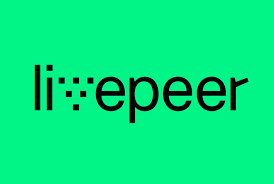Latest News
- AI Crypto Tokens Surge Ahead Of Nvidia Q4 Earnings
- Monsta Mash ($MASH) Targets $3 in 2025; Harmony (ONE) & Livepeer (LPT) Price Prediction
- Binance Reveals Major Update on BANANA and These Crypto, Will Prices React?
- Grayscale Revamps Crypto Funds: New Altcoins for AI, DeFi, and Large Cap Portfolios
Current Price
The current price of LPT is $4.73843
Introduction
Livepeer (LPT) is an intriguing player in the rapidly evolving landscape of decentralized video streaming, offering a novel approach that seeks to challenge established norms.
By harnessing blockchain technology, Livepeer enables cost-effective video transcoding through a distributed network of nodes, thereby presenting a compelling alternative to traditional streaming solutions.
However, as with any emerging platform, understanding its operational mechanisms, tokenomics, and community dynamics is essential to fully grasp its potential.
What challenges does Livepeer face, and how might it impact the future of digital content? Let’s discover more…
Quick Overview
- Livepeer offers a decentralized video streaming infrastructure, utilizing blockchain technology for efficient transcoding and lower costs compared to traditional providers.
- The Livepeer Token (LPT) incentivizes participation, rewarding transcoders and delegators while enabling governance decisions by token holders.
- With costs as low as $0.01 per minute of video, Livepeer provides a competitive pricing model promoting accessibility for various users.
- The platform’s adaptive bitrate streaming enhances video quality, ensuring optimal user experience across different devices and network conditions.
- Livepeer’s open-source protocol encourages community involvement and innovation, fostering a collaborative ecosystem for developers and users alike.

What Is Livepeer?
Livepeer is a decentralized video streaming infrastructure that leverages blockchain technology to provide scalable and cost-effective solutions for developers and content creators. By utilizing a peer-to-peer network, Livepeer aims to disrupt traditional video streaming models that often rely on centralized servers, which can present issues related to bandwidth, latency, and cost.
The platform operates on the Ethereum blockchain, enabling participants to engage in a decentralized marketplace for video transcoding services. This approach allows for a more efficient allocation of resources, as users can contribute their computing power to the network, effectively reducing the costs associated with video processing and delivery.
Data from various studies indicate that video content constitutes a significant percentage of internet traffic, with projections suggesting it will reach 82% by 2022. As demand for video streaming escalates, Livepeer’s infrastructure offers a viable alternative, supporting high-quality streaming while minimizing overhead.
Additionally, the platform incorporates its native token, LPT, which facilitates transactions and incentivizes network participation. This economic model not only enhances user engagement but also guarantees the sustainability of the ecosystem, positioning Livepeer as a pivotal player in the evolving landscape of digital media.
Decentralized Video Processing
Decentralized video processing represents a transformative approach to managing multimedia content, leveraging blockchain technology to enhance scalability and cost-efficiency. Livepeer achieves this by distributing the video transcoding process across a global network of nodes, effectively reducing the reliance on traditional centralized infrastructure.
Key features of Livepeer’s decentralized video processing include:
- Distributed Network: Nodes within the Livepeer network perform transcoding tasks, allowing for parallel processing and reducing bottlenecks associated with centralized systems.
- Cost-Effectiveness: By utilizing unused computing resources from node operators, Livepeer considerably lowers the costs associated with video processing, making it accessible for a wider range of creators and developers.
- Scalability: As demand for video content grows, the network can seamlessly scale by incorporating additional nodes, which enhances processing capacity without compromising performance.
- Incentive Alignment: Node operators are compensated for their contributions, ensuring a continuous supply of resources while maintaining network integrity through the economic incentive structure.
This decentralized model not only enhances operational efficiency but also democratizes video processing, empowering creators and developers to innovate without the constraints of traditional video infrastructure.
Token Incentives Structure
At the core of Livepeer’s operational framework lies a robust token incentive structure designed to promote participation and guarantee the network’s sustainability. This structure primarily revolves around the Livepeer Token (LPT), which serves as a medium for aligning the interests of various stakeholders, including video publishers, transcoders, and delegators.
In essence, LPT enables video publishers to pay transcoders for video processing services, creating a direct economic incentive for content delivery. Transcoders, who perform the vital task of converting video formats and resolutions, are rewarded with LPT for their contributions, thereby incentivizing efficient resource use and high-quality service provision.
Additionally, a portion of the fees collected is redistributed to LPT holders, encouraging token staking and participation in governance. Delegators, who support transcoders by locking their LPT, also receive a share of the rewards, enhancing network security and stability.
This multifaceted approach to tokenomics not only mitigates the risk of centralization but also fosters a vibrant ecosystem where all participants are incentivized to contribute positively, ultimately driving network growth and resilience in the competitive landscape of decentralized video streaming.

Key Features of Livepeer
Livepeer offers a decentralized video infrastructure that enhances the reliability and accessibility of video streaming services.
Its architecture not only promotes cost efficiency by leveraging a network of distributed nodes but also guarantees scalability to accommodate varying demands.
These key features position Livepeer as a competitive player in the rapidly evolving video streaming landscape.
Decentralized Video Infrastructure
Frequently, modern applications require scalable and efficient video processing solutions to meet the growing demand for high-quality streaming. Livepeer addresses this need through its decentralized video infrastructure, leveraging blockchain technology to create a robust platform for video transcoding and distribution.
Key features include:
- Decentralization: By distributing video processing across a network of nodes, Livepeer eliminates single points of failure, enhancing reliability and uptime.
- Open Source Protocol: Livepeer operates on an open-source framework, allowing developers to contribute to its evolution and ensuring transparency in operations.
- Adaptive Streaming: The platform supports adaptive bitrate streaming, optimizing video quality based on real-time bandwidth conditions, which is essential for user experience.
- Token Incentives: Utilizing the LPT token, Livepeer incentivizes node operators to provide transcoding services, creating a self-sustaining ecosystem that encourages participation and investment in the network.
These features collectively position Livepeer as a pioneering solution in the domain of decentralized video processing, catering to the current and future needs of content creators and users alike while ensuring efficiency and scalability.
Cost Efficiency and Scalability
A key advantage of Livepeer is its ability to deliver cost efficiency and scalability in video processing services. By leveraging a decentralized network of nodes, Livepeer reduces the reliance on traditional cloud providers, which often impose considerable costs for video transcoding and streaming. This decentralized model allows for a competitive marketplace where node operators can offer their services at varying price points, leading to lower overall costs for users.
In terms of scalability, Livepeer’s architecture is designed to dynamically handle varying workloads. As demand for video processing increases, the network can onboard additional node operators to distribute the load effectively. This elasticity is essential, particularly for applications with unpredictable traffic patterns, such as live events or viral content.
Data from Livepeer’s network shows that the cost of transcoding can be as low as $0.01 per minute of video, markedly undercutting traditional services. Additionally, the network’s capacity can scale to accommodate thousands of concurrent streams without a degradation in quality, ensuring a seamless user experience.
These features make Livepeer an attractive choice for developers seeking a robust and economical solution for video content delivery.

Benefits of Using Livepeer
Utilizing Livepeer offers numerous advantages for developers and content creators seeking efficient and cost-effective video streaming solutions. The platform leverages decentralized technology, enhancing performance and reducing overall costs associated with traditional streaming services. Below are key benefits of using Livepeer:
- Decentralization: By operating on a decentralized network, Livepeer eliminates reliance on centralized servers, reducing single points of failure and enhancing reliability.
- Cost Efficiency: Users can considerably lower their streaming costs due to the competitive, market-driven pricing model, which often results in lower fees compared to conventional providers.
- Scalability: Livepeer’s architecture allows for seamless scaling, accommodating varying bandwidth demands without compromising quality or performance, making it ideal for both small and large-scale projects.
- Quality and Flexibility: The platform supports adaptive bitrate streaming, ensuring peak video quality across various devices and network conditions, thereby catering to a diverse audience.
These benefits position Livepeer as an innovative solution that not only meets the evolving demands of video streaming but also aligns with the growing need for sustainable and efficient technology in the digital content landscape.
Livepeer’s Tokenomics
Livepeer’s tokenomics is characterized by a carefully structured token supply dynamic, which influences its market behavior and staking incentives.
The governance model empowers token holders to participate in protocol decisions, while the utility of the token is integral to accessing various network services.
Analyzing these facets reveals how they collectively contribute to the platform’s sustainability and growth potential.
Token Supply Dynamics
The token supply dynamics of Livepeer are critical for understanding its economic model and overall sustainability within the decentralized video streaming ecosystem.
Livepeer operates on a unique tokenomics structure that influences both the incentive mechanisms for participants and the utility of the LPT token itself. Key aspects include:
- Total Supply: The maximum supply of LPT is capped at 1,000,000,000 tokens, guaranteeing scarcity and potentially increasing value over time.
- Initial Distribution: Tokens were initially distributed to early investors, team members, and community contributors through various mechanisms, including a token sale.
- Incentive Mechanisms: LPT tokens are used to incentivize video miners and delegators, aligning their interests with the network’s health and performance.
- Burn Mechanism: Livepeer employs a token burn strategy that reduces supply based on network usage, which is intended to create upward pressure on the token’s value as demand increases.
These dynamics not only provide a framework for economic growth but also guarantee that stakeholders are rewarded for their participation in the Livepeer network, ultimately fostering a sustainable ecosystem for decentralized video streaming.
Governance and Utility
Governance within the Livepeer ecosystem is intricately tied to the utility of the LPT token, establishing a dual role that enhances both decision-making processes and network functionality.
The LPT token serves as a pivotal mechanism for voting on protocol upgrades, parameter adjustments, and key governance proposals, allowing stakeholders to influence the direction of the platform. This participatory framework guarantees that decisions reflect the interests of the broader community, thereby fostering a decentralized governance model.
In terms of utility, LPT tokens are utilized for the staking process, where participants can lock their tokens to support transcoding services.
Stakers are rewarded with a share of the network’s fees, creating an economic incentive aligned with maintaining high-quality service delivery. The staking mechanism not only secures the network but also encourages active participation, as token holders must remain engaged to optimize their returns.
Comparisons With Other Platforms
When evaluating Livepeer in the context of video streaming solutions, it becomes essential to compare its features, scalability, and cost-effectiveness against other platforms in the market.
Livepeer distinguishes itself with a decentralized architecture that fundamentally alters the economics of video streaming. Here are key points of comparison:
- Cost Efficiency: Livepeer aims to reduce costs considerably by leveraging a decentralized network of nodes, in contrast to traditional platforms that rely on centralized infrastructures, often leading to higher operational expenses.
- Scalability: The platform’s ability to scale dynamically allows it to handle varying workloads without compromising performance, unlike many competitors which may face bottlenecks under high traffic conditions.
- Quality of Service (QoS): Livepeer utilizes adaptive bitrate streaming, ensuring ideal video quality regardless of network conditions, whereas other platforms may struggle to maintain consistent quality during fluctuations.
- Ecosystem Integration: Livepeer’s open-source nature fosters collaboration and integration with other blockchain projects, broadening its utility, while many centralized platforms lack such interoperability.
Use Cases for Livepeer
Livepeer’s decentralized architecture not only enhances cost efficiency and scalability but also opens a wide range of practical applications across various industries.
One prominent use case is in live streaming services, where traditional platforms face high costs and bandwidth limitations. Livepeer enables content creators to stream video at lower rates by utilizing a network of decentralized nodes for transcoding and distribution, thereby greatly reducing operational expenses.
Additionally, the gaming industry can leverage Livepeer for real-time streaming of gameplay and events. This technology allows seamless integration into gaming platforms, facilitating interactive experiences for audiences without the latency associated with centralized services.
Furthermore, educational institutions can utilize Livepeer for distance learning and virtual classrooms. By harnessing its capabilities, schools and universities can provide high-quality video content to a vast number of students without incurring prohibitive costs.
Community and Ecosystem
The success of any decentralized platform relies heavily on its community and ecosystem, which serve as the backbone for innovation and development. Livepeer has cultivated a robust community that plays a crucial role in its growth and sustainability.
This ecosystem comprises various stakeholders, including developers, node operators, and end-users, all of whom contribute to the platform’s functionality and outreach.
Key components of the Livepeer community and ecosystem include:
- Developer Engagement: A strong developer community fosters continuous improvement through open-source contributions and collaborations.
- Node Operators: These individuals or entities provide the necessary infrastructure for video transcoding, ensuring the system’s reliability and scalability.
- User Adoption: The wider user base, including content creators and streaming services, drives demand for Livepeer’s services, enhancing its market position.
- Governance Participation: Community members actively participate in governance decisions, influencing the platform’s direction and policies.
Together, these elements create a dynamic environment that not only supports Livepeer’s current operations but also positions it for future advancements in decentralized video streaming technology.
Challenges and Limitations
Maneuvering the landscape of decentralized video streaming, one encounters several challenges and limitations that could impact Livepeer’s long-term viability.
Initially, the reliance on Ethereum’s network presents scalability issues, particularly during peak usage times when gas fees can escalate, making transactions costly and inefficient. As video streaming demands increase, this could hinder user adoption and operational efficiency.
Secondly, competition from established centralized platforms poses a significant challenge. Companies like YouTube and Vimeo offer robust infrastructure and user-friendly interfaces, which can be difficult for decentralized alternatives to match. This disparity may lead to a slower user acquisition rate for Livepeer.
Moreover, the regulatory landscape surrounding cryptocurrencies and decentralized services remains ambiguous. Potential regulatory crackdowns could stifle operations, create compliance burdens, or lead to outright bans in certain jurisdictions, further complicating Livepeer’s growth trajectory.
Ultimately, the technology itself is still evolving. Issues related to video quality, latency, and user experience must be continuously addressed to guarantee that Livepeer meets the expectations of a diverse user base.
Future Outlook for Livepeer
Steering through the myriad challenges outlined previously, the future outlook for Livepeer hinges on its ability to innovate and adapt within the dynamic landscape of decentralized video streaming.
As the demand for high-quality, cost-effective streaming solutions continues to rise, Livepeer’s unique proposition of leveraging blockchain technology positions it as a potential disruptor in the industry.
Key factors that will drive its future success include:
- Enhanced Scalability: Continued improvements to the protocol’s scalability will be vital to accommodate growing user demands and increase network participation.
- User Acquisition Strategies: Aggressive marketing and partnerships with content creators and platforms will be essential to boost user adoption and engagement.
- Technological Advancements: Ongoing R&D in transcoding efficiency and latency reduction will solidify Livepeer’s position as a leading alternative to traditional streaming solutions.
- Regulatory Compliance: Maneuvering the evolving regulatory landscape will guarantee that Livepeer remains competitive and trustworthy, minimizing operational risks.
Frequently Asked Questions
What Is the Current Price of Livepeer (Lpt) Token?
The current price of a cryptocurrency token is determined by market supply and demand dynamics. For precise and up-to-date valuation, it is advisable to consult reputable financial platforms or cryptocurrency exchanges that provide real-time data.
How Can I Buy Livepeer (Lpt) Tokens?
To acquire tokens, investors can utilize cryptocurrency exchanges that list the asset, ensuring to establish an account, complete necessary verifications, and fund their balance before executing buy orders for the desired token quantity.
Is Livepeer (Lpt) Available on Major Exchanges?
Livepeer (LPT) is listed on several major cryptocurrency exchanges, including Binance, Coinbase, and Kraken. Availability may vary by region, necessitating verification of the specific exchange’s offerings and compliance with local regulations before proceeding with transactions.
Are There Any Staking Options for Livepeer Tokens?
Staking options for tokens can enhance liquidity and incentivize participation within a network. Users should explore the specific platforms and protocols offering staking mechanisms, as well as the associated rewards and risks linked to such investments.
How Can I Participate in Livepeer’s Community Events?
To engage in community events, individuals should monitor official channels such as social media platforms, forums, and newsletters. Participation often includes attending virtual meetups, contributing to discussions, and joining collaborative projects to enhance community involvement.
Wrapping Up
To summarize, Livepeer represents a significant advancement in decentralized video streaming, leveraging blockchain technology to achieve cost-effective transcoding and enhanced scalability.
Its innovative use of a token-based incentive model fosters community engagement and drives participation among video publishers and transcoders.
Despite certain challenges and limitations inherent in the blockchain space, the platform’s adaptive streaming capabilities and commitment to transparency position it as a remarkable alternative to traditional streaming services, with promising potential for future growth and development.
